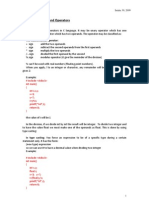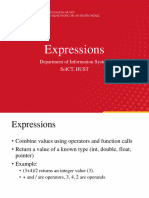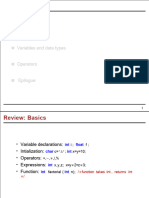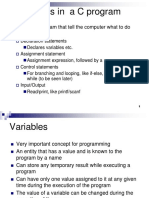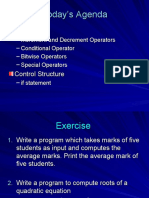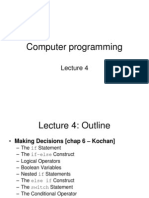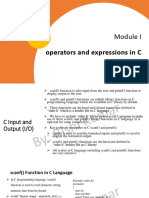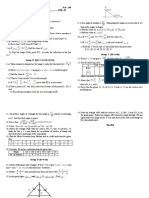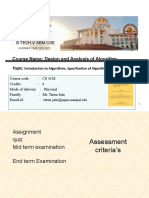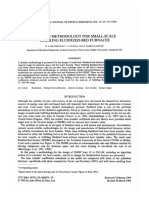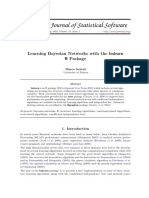0% found this document useful (0 votes)
17 views32 pages02 - Conditional Statements
The document is a lecture on C programming focusing on operators and conditional statements. It covers arithmetic operators, increment/decrement operators, assignment operators, relational operators, logical operators, and conditional statements such as if-else structures. Additionally, it includes examples and exercises for practical application of these concepts.
Uploaded by
tasnimulnafisCopyright
© © All Rights Reserved
We take content rights seriously. If you suspect this is your content, claim it here.
Available Formats
Download as PDF, TXT or read online on Scribd
0% found this document useful (0 votes)
17 views32 pages02 - Conditional Statements
The document is a lecture on C programming focusing on operators and conditional statements. It covers arithmetic operators, increment/decrement operators, assignment operators, relational operators, logical operators, and conditional statements such as if-else structures. Additionally, it includes examples and exercises for practical application of these concepts.
Uploaded by
tasnimulnafisCopyright
© © All Rights Reserved
We take content rights seriously. If you suspect this is your content, claim it here.
Available Formats
Download as PDF, TXT or read online on Scribd
/ 32








